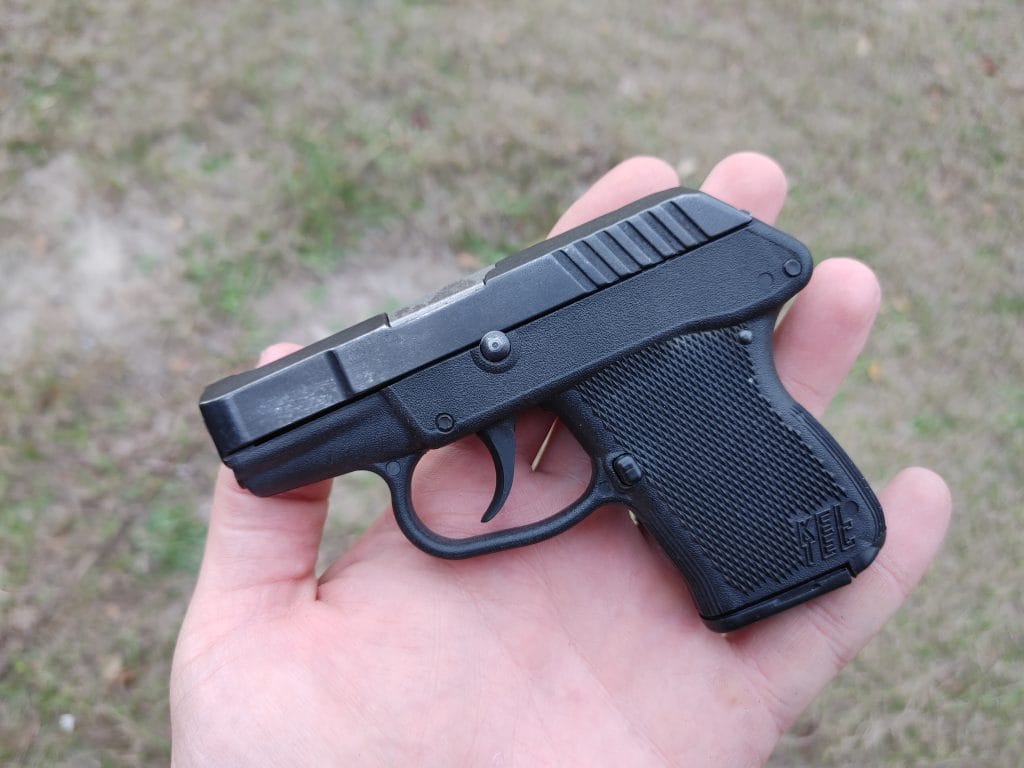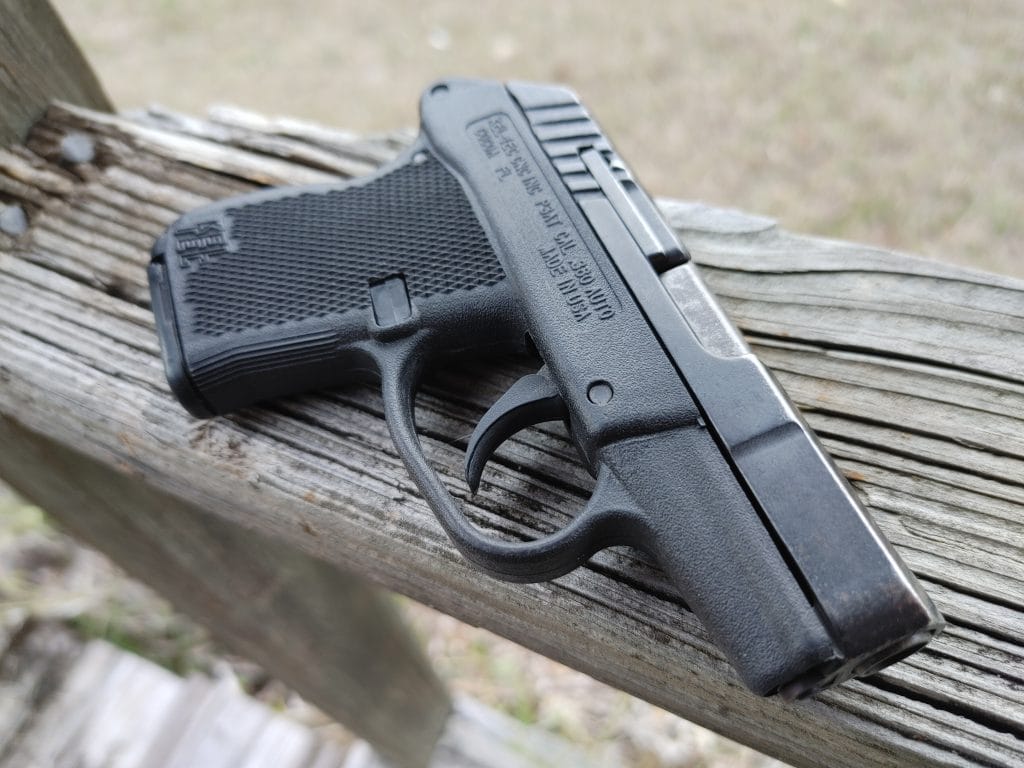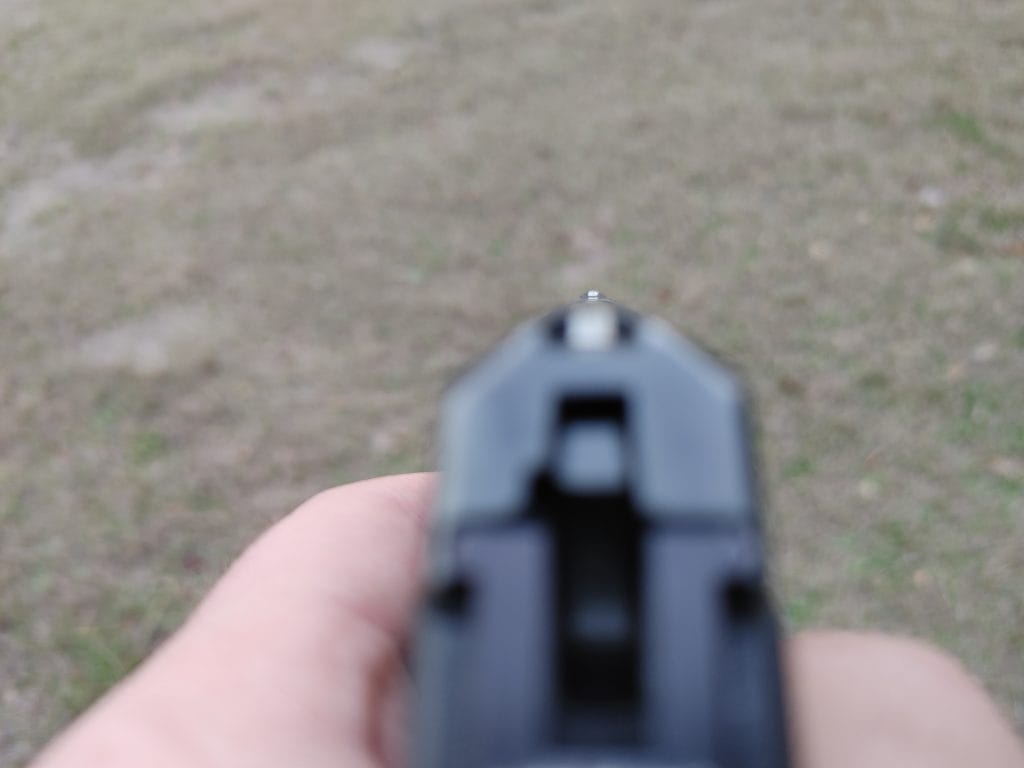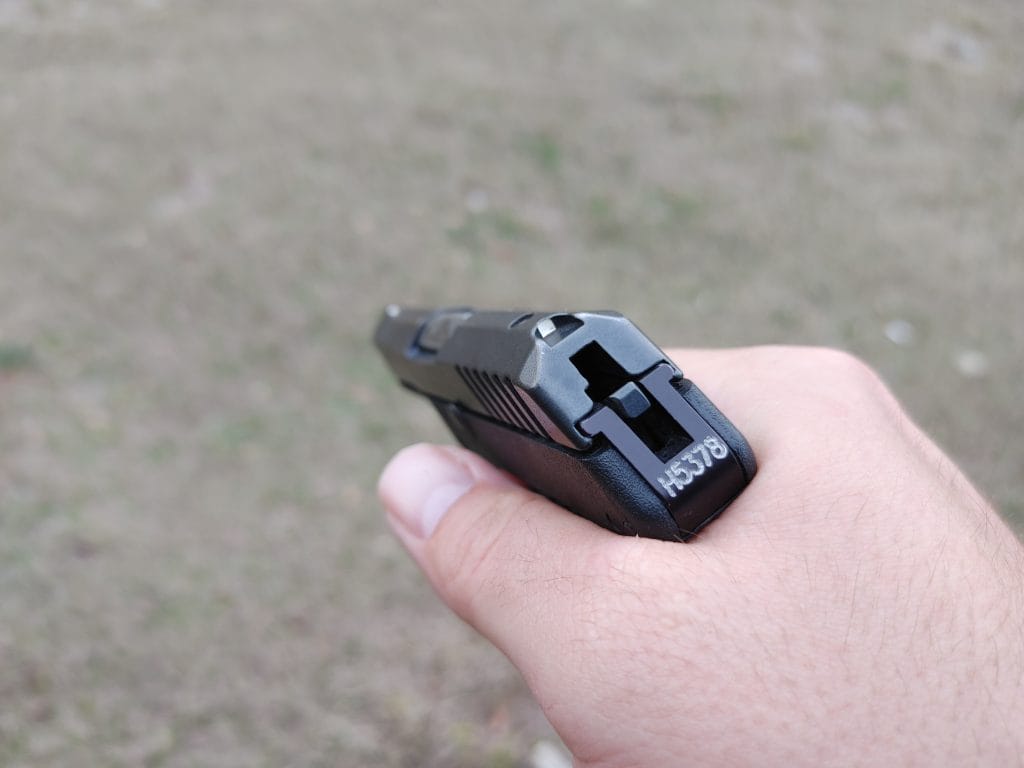Today we are in mourning. The KelTec P-3AT was discontinued. To many, that means nothing. It’s just another discontinued gun, and it’s a KelTec at that. That’s the wrong attitude to have. The discontinuation of the P-3AT is the death of the first pocket .380 ACP.
These days you can throw a stick in a gun store and hit a pocket .380 ACP. Concealed carry really took off after Shall Issue became the norm in the United States. In short order, more people were carrying firearms than ever before, and more and more people were looking for smaller, easier-to-carry, easier-to-conceal firearms. This started a surge for smaller guns, and KelTec was ready to answer the call. They had already produced one of the smallest semi-auto handguns on the market, the P32. Production started in 1999 on the P32, well before the massive wave of concealed carry.

A few years later, in 2003, KelTec beefed up the P32 into the P-3AT. Say it slowly. It’s a clever name. At this time period, .380 ACP wasn’t popular, and neither was .32 ACP necessarily. The P-3AT and later .380 pocket pistols revived the .380 ACP market. Why did .380 succeed over the .32? You could argue it’s more powerful, and it is, but from a sub-3-inch barrel, the difference mainly comes from the gun’s recoil.
The P-3AT — Lasting Impressions
Why .380 ACP? Well, we live in America, and for some reason, we were stuck on this idea that bigger is better regardless of anything else. We are the .45 ACP country that will cling to larger projectiles. That made the .380 ACP perfect for pocket pistols. It’s bigger than .25 ACP and .32 ACP but still small enough to fit inside a pocket pistol. The P-3AT delivered that .380 ACP cartridge in a pistol not much bigger or heavier than the .32 ACP.
The P-3AT became the blueprint for pocket carry .380 ACP pistols. Ruger and Smith and Wesson created the LCP and Bodyguard, respectively. These two guns basically copied the design of the P-3AT in many ways to deliver their own pocket pistol. Wiley Clapp said it best in a 2004 issue of Guns & Ammo, “Ingenuity is often nothing more than a combination of existing principles applied in unique ways. Kel-Tec’s new P-3AT has no single feature that is not established in modern pistol design, yet it has no competition in its niche.”

In the shadow of the funeral of the P-3AT, we got our hands on a first-generation P-3AT to see the gun that started a concealed carry revolution. It’s still the lightest .380 ACP on the market.
KelTec P-3AT — Specs and Features
- Barrel Length: 2.75 inches
- Overall Length: 5.2 inches
- Weight: 8.3 ounces
- Width: .77 inches
- Caliber: .380 ACP
- Capacity: 6 rounds
It’d be easy to assume the P-3AT was a direct blowback gun, but you’d be assuming too much. It’s a locked breech, short recoil pistol that uses a traditional Browning short recoil action. That’s a fairly nice feature for a pocket .380 ACP.
The P-3AT is a fairly plain-jane pistol. It’s very simple. The gun features no manual safety and relies on a long, heavy trigger to prevent NDs. The weapon lacks a slide hold open, which is odd because the P32 had one. The magazine release is super small but fast reloads aren’t likely an issue. The sights for both the Gen 1 and Gen 2 are minuscule, but they are there.
The gun does rock a very aggressive grip texture, but not much else. It’s as simple and plain as it gets. The magazines are made by Mec-Gar, which also makes me happy. Mec-Gar makes good stuff, and I trust their magazines.
Getting a Grip
That aggressive grip texture sure is nice because you can’t get a full hand on the gun. I hate a hanging pinky, but it’s a reality with the P-3AT. The magazine release is very small but also very unlikely to get accidentally nudged while pocket-carrying or when firing. It’s still easy to reach and clicks very positively when pressed. The magazine hops out of the gun as if it’s scared of it.
The trigger guard is small but fits my nice big fingers. The slide features rear texturing as well. There isn’t much resistance to fight through, and working the slide is plenty easy. It’s surprisingly light for a gun from an era where recoil springs are stiff, and you best get stronger.
At the Range
With a few hundred rounds of .380 ACP FMJs and a couple of magazines, I set to figure out if this pocket .380 ACP was worth a bang or two. Right off the bat, the sights are very small and unique to the first generation of KelTec P-3AT pistols. The design features a rear sight that’s a notch in the slide with some white paint over it. The front sight is also a notch in the slide, with some paint and a triangular tip.

You align the rear notch with the front notch and stack them atop each other. It’s not exactly the fastest set of sights, but once you get used to them, they are fairly effective. This isn’t a gun designed for producing small groups. The double-action trigger certainly doesn’t help there. However, with practice, patience, and a little range time, you’ll be surprised at the gun’s accuracy. At 25 yards, I could easily hit a 10-inch gong.
That’s not slow-rested fire but drawn from the pocket with an aggressive two-handed stance. Even double taps were plenty possible with the P-3AT on that gong. A four-inch gong could be hit if I used a bench rest and a slow trigger pull. Sure, maybe not every shot, but the majority hit that gong.

It’s a Handful
The KelTec P-3AT does crash rearward into your hand with every shot fired. Holy crap does this thing like to recoil. It’s snappy and slaps your hand. The gun’s recoil tries to pull it out of your hand with each shot, so it requires a firm grip to control. Without a good tight grip, the gun can fight its way away from you.

It admittedly gets tiring, and I broke it down to a hundred rounds a day for three hundred rounds total. These were all FMJs, mostly Remington, with a box of Fioochi mixed in. The P-3AT ticked through all of it without issue. I didn’t have any hollow points to try, but this cartridge doesn’t suffer from the same rimlock as the .32 ACP.
I was pleasantly surprised at the reliability of the gun. Three hundred rounds aren’t much, but for a gun that cost me $150, I expected more issues. It’s ugly and cheap, but it works. It’s also capable of reaching beyond point-blank range in terms of effectiveness.
The Mini Blaster
This pocket pal wouldn’t be my main carry gun, but it would be a suitable backup or even an occasional pocket rocket for your gym shorts. It’s a special-purpose design, and in this niche, it’s a fairly suitable pistol. Sure, there are more refined options, like the LCP and LCP 2, but the P-3AT is far from the bottom of the pile.

